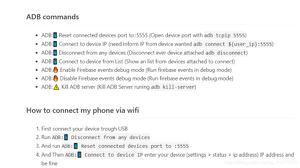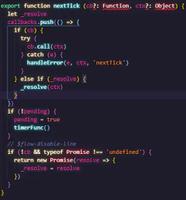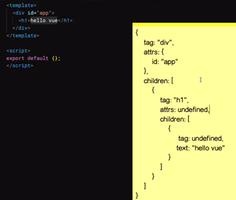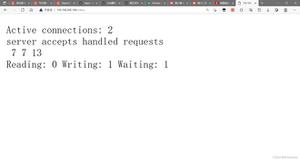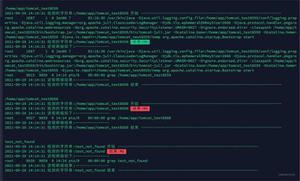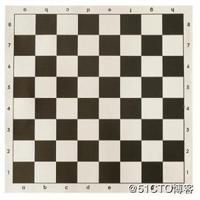React教程之传递Props——Transferring Props
在React中,一个非常常用的模式就是将组件抽象封装起来。这些组件将对外公开一些属性(Props)来完成一些简单的功能,然而其内部细节可能是比较复杂的。一般情况下,Props是不变的。其使用方式如下:
{this.props.key}
下面我们先用一段代码来看一下Props如何使用
var CommentBox = React.createClass({
render:function(){
return (
<div className=”CommentBox”>
Hello,world! I am a {this.props.name}.
</div>
);
}
}
);
ReactDOM.render(
<CommentBox name="Props" />,
document.getElementById('content')
);
看到了吗,其实Props使用就是这么简单。从上面的例子中我们可以知道,其实Props可以看做是在组件之间进行通信的一种方式。当然,对于组件之间的通信以后再向大家介绍。这里我们只介绍传递Props——Transferring Props。
好,接着我们继续看下面的代码
var Checkbox = React.createClass({
render: function() {
var Cbox = this.props.checked ? 'Checked' : 'Unchecked';
return (
<div className={Cbox} >
{this.props.children}
</div>
);
}
});
ReactDOM.render(
<Checkbox checked={true}>
Hello world!
</Checkbox >,
document.getElementById('content')
);
这段代码没有问题。但是,如果我想在div标签上面加上属性title、name、onClick等,是不是我要每一条都要写到组件里
<div className={fancyClass} onClick={this.props.onClick} name={this.props.name} title={this.props.title}>
{this.props.children}
</div>
这样做显然是很啰嗦的,也是不安全的。这时我们可以通过JSX的特性 … 来解决这一问题。它的功能是将未知属性提取出来。
其用法就是,列出当前要使用的属性,后面再跟上 …other (注意:…后面跟的字符串不是固定的other,也可以是其它的,例如:onmpw)。
var {checked , ...other} = this.props;
这样就能确保除了那些明确使用的属性,其他的所有props都能传下去了。此时的…other中保存的是除了checked属性以外的所有属性。对于上面的例子我们可以改写成如下形式
var Checkbox = React.createClass({
render: function() {
var {checked , ...other} = this.props;
var Cbox = checked ? 'Checked' : 'Unchecked';
return (
<div className={Cbox} {...other} />
);
}
});
ReactDOM.render(
<Checkbox checked={true} title="迹忆博客" name="onmpw">
Hello world!
</Checkbox >,
document.getElementById('content')
);
在这个例子中,…other 中的属性为title、name和children,没有checked。
var {checked,title , ...other} = this.props;
这样,在 ...other 中的属性为name和children,就也不包含title了。
下面我们介绍一个和…other 类似的知识点,就是 …this.props。看下面的例子:
var Checkbox = React.createClass({
render: function() {
var Cbox = this.props.checked ? 'Checked' : 'Unchecked';
return (
<div className={Cbox} {...this.props} />
);
}
});
其实,这里…this.props和…other功能差不多。但是,其不同的地方在于,…other是包含除了明确使用的属性以外剩下的那些属性。而…this.props包含所有的属性,不论你是否是明确使用的。也就是说,在上面的额例子中,checked属性也会被传到组件里面去。
如果一个属相被使用了,但是还想接着往下传那应该怎么办。我们通过上面的讲解知道,如果使用…other方式的话,属性被使用了就无法再往下传了。所以说如果想要往下继续传递的话,可以使用checked={checked}这种方式再次重传。
看下面的例子
var Checkbox = React.createClass({
handleChange:function(){
console.log('迹忆博客');
},
render: function() {
var { checked, title, ...other } = this.props;
var Cbox = checked ? 'FancyChecked' : 'FancyUnchecked';
var boxTitle = checked ? 'Y ' + title : 'N ' + title;
return (
<label>
<input {...other}
checked={checked}
className={Cbox}
type="checkbox"
onChange={this.handleChange}
/>
{boxTitle}
</label>
);
}
});
ReactDOM.render(
<Checkbox checked={true} name="onmpw" title="迹忆博客" />,
document.getElementById('content')
);
这里我们要注意属性的顺序。我们把input中{…other}放在JSX Props的前面是保证JSX的Props不被覆盖。在上面的例子中我们就可以保证input的类型就是checkbox。
比方说吧,如果我们input中的Props的顺序是下面这样的
<input
type="checkbox"
{...other}
checked={checked}
className={Cbox}
onChange={this.handleChange}
/>
而我们又在使用render渲染的时候指定了input的type属性为text
<Checkbox type="text" checked={true} name="onmpw" title="迹忆博客" />
那最后得到的就不是checkbox了,而是一个输入框。因为input的type=”checkbox”属性被…other中的type属性覆盖掉了。
好了,说到这相信大家对React的Props概念和Props的传递有一个比较清晰的认识了。希望本文对大家学习React有一定的帮助。
本文转载自:迹忆客(https://www.jiyik.com)
以上是 React教程之传递Props——Transferring Props 的全部内容, 来源链接: utcz.com/z/290087.html

